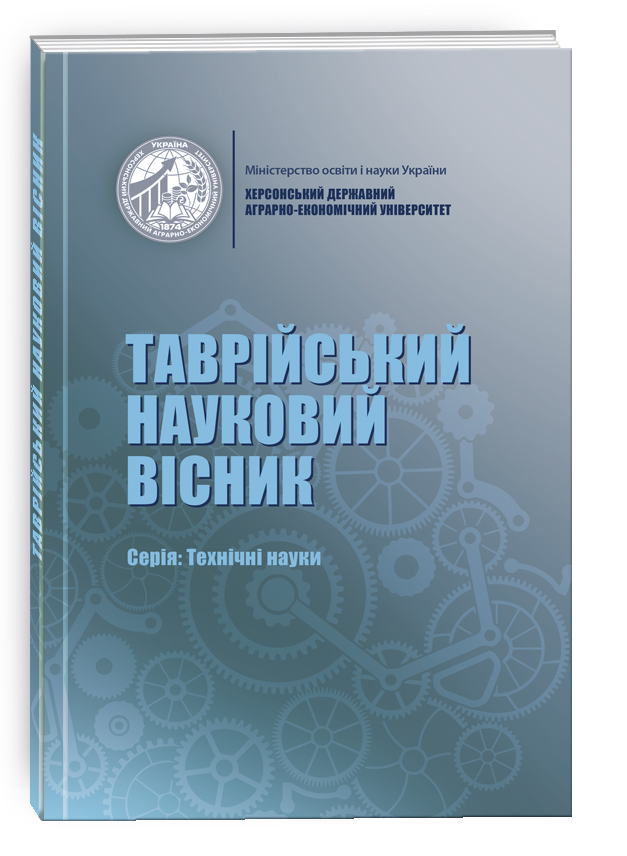A DECOMPOSITION-BASED APPROACH TO MULTI-OBJECTIVE UNMANNED VEHICLE ROUTE OPTIMISATION
DOI:
https://doi.org/10.32782/tnv-tech.2025.1.18Keywords:
unmanned vehicles (UVs), multi-objective optimization, PROMETHEE, Branch- and-Bound Method, decomposition of problemAbstract
The rapid integration of unmanned vehicles (UVs) into industries such as logistics, defence, agriculture, and environmental monitoring has necessitated the development of advanced route optimisation methodologies to enhance operational efficiency. Given their ability to operate in hazardous environments and under diverse meteorological conditions, UVs offer significant advantages over traditional transportation methods. However, optimising UV routes presents a complex challenge due to the need to balance multiple, often conflicting, objectives, including minimising travel distance and time, reducing fuel consumption, ensuring safety in varying weather conditions, adapting to terrain constraints, and prioritising mission-critical tasks.This study addresses the problem of multi-objective UV route optimisation by introducing a decomposition-based approach that divides the optimisation process into two stages: (1) the formation of a subset of candidate routes based on predefined constraints and (2) the selection of the optimal route from this subset using a combination of the PROMETHEE (Preference Ranking Organization Method for Enrichment Evaluation) method and heuristic algorithms.The integration of these techniques enables effective decision-making by systematically ranking alternative routes according to multiple evaluation criteria. The proposed methodology efficiently reduces computational complexity, making it particularly suitable for large- scale UV deployment scenarios. A comparative analysis of different optimisation strategies demonstrates the effectiveness of the proposed approach. The results indicate that the method reduces computational time and resource consumption while maintaining flexibility in dynamic environments. By leveraging the PROMETHEE method for multi-criteria decision-making and heuristic search techniques for rapid optimisation, the study provides a practical solution for UV route planning, ensuring enhanced adaptability to operational constraints. The findings contribute to ongoing research in UV logistics and mission planning by offering a structured framework that balances efficiency, reliability, and computational feasibility in complex, multi- objective optimisation tasks.
References
Shevchuk, D., Yakushenko, O., Steniakin, I., & Shyshka, A. (2024). Delivery route optimization with neural networks. In A.K. Nagar, D.S. Jat, D. Mishra, & A. Joshi (Eds.), Intelligent Sustainable Systems (pp. 441–452). Springer. https://doi.org/10.1007 /978-981-99-7569-3_36
Türkoğlu, B., & Eroğlu, H. (2023). Genetic algorithm for route optimization. In N. Dey (Ed.), Applied Genetic Algorithm and Its Variants (pp. 51–79). Springer. https:// doi.org/10.1007/978-981-99-3428-7_3
Li, X. (2023). Distribution route optimization method for chain convenience stores based on an improved genetic algorithm. In M. Atiquzzaman, N.Y. Yen, & Z. Xu (Eds.), Proceedings of the 4th International Conference on Big Data Analytics for Cyber-Physical System in Smart City – Volume 2 (pp. 523–530). Springer. https://doi. org/10.1007/978-981-99-1157-8_63
Eiselt, H.A., Marianov, V., & Bhadury, J. (2023). Multicriteria decision making. In Multicriteria Location Analysis (pp. 37–70). Springer. https://doi.org/10.1007/978-3- 031-23876-5_3
Symonov, D. І. (2021). Algorithm for determining the optimal flow in supply chains, considering multi-criteria conditions and stochastic processes. Bulletin of Taras Shevchenko National University of Kyiv. Physical and Mathematical Sciences, (2), 109–116. https://doi.org/10.17721/1812-5409.2021/2.15 [in Ukrainian]
Symonov, D., & Symonov, Y. (2024). Methods for selecting models of functioning of multicomponent information and environmental systems. Scientific Journal «Mathematical Modeling», Vol. 1, No 50, 57–63. https://doi.org/10.31319/2519-8106 .1(50)2024.304943
Akram, M., & Bibi, R. (2023). Multi-criteria group decision-making based on an integrated PROMETHEE approach with 2-tuple linguistic Fermatean fuzzy sets. Granular Computing, 8, 917–941. https://doi.org/10.1007/s41066-022-00359-6
Plataridis, K., & Mallios, Z. (2024). Mapping flood susceptibility with the PROMETHEE multi-criteria analysis method. Environmental Science and Pollution Research, 41267–41289. https://doi.org/10.1007/s11356-024-33895-6
Symonov, D., & Gorbachuk, V. (2023). A method of finding solutions in a dynamic model of inventory management under uncertainty. Bulletin of Taras Shevchenko National University of Kyiv. Physical and Mathematical Sciences, (4), 31–39. https:// doi.org/10.17721/1812-5409.2022/4.4 [in Ukrainian]
Dejaegere, G. (2024). Comparing with PROMETHEE: some new theoretical contributions. 4OR-Q Journal of Operations Research. https://doi.org/10.1007/ s10288-024-00570-y
Bruch, S. (2024). Branch-and-bound algorithms. In Foundations of Vector Retrieval (pp. 31–56). Springer. https://doi.org/10.1007/978-3-031-55182-6_4
Muñoz, G., Paat, J., & Xavier, Á.S. (2023). Compressing branch-and-bound trees. In A. Del Pia & V. Kaibel (Eds.), Integer Programming and Combinatorial Optimization (pp. 348–362). Springer. https://doi.org/10.1007/978-3-031-32726-1_25







